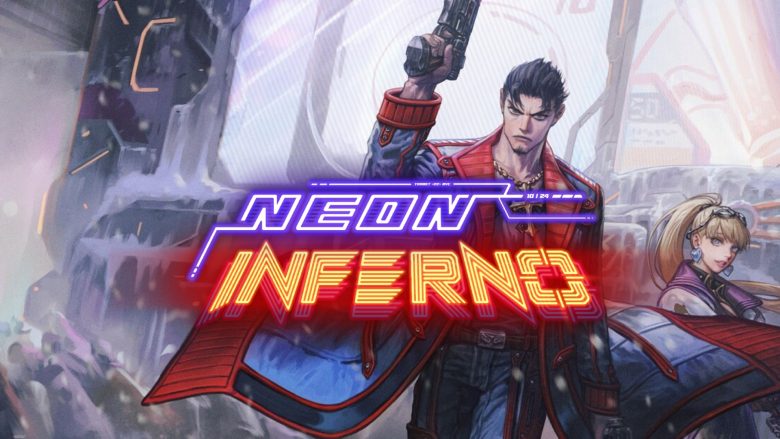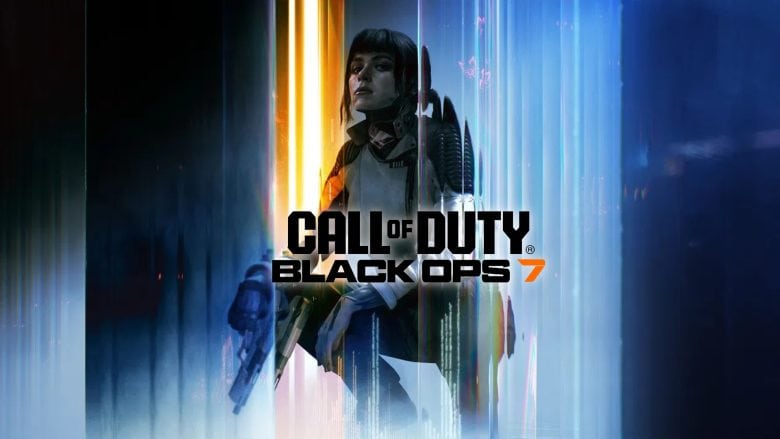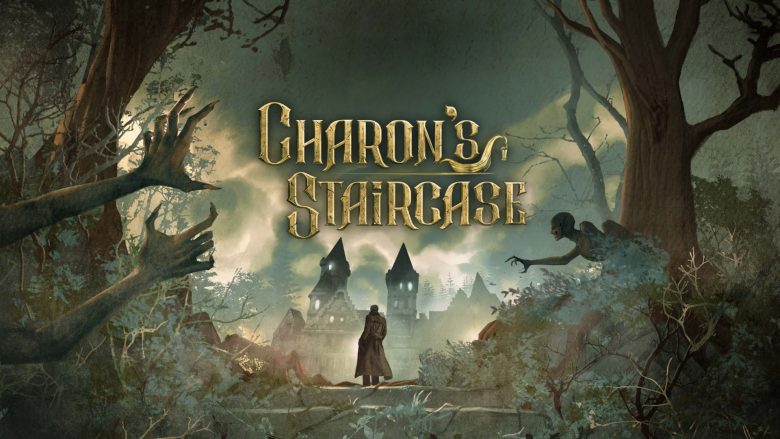Symphonia offers a masterful and eloquent portrayal of music’s true essence and the deep emotional connection it inspires, guiding us through a unique visual, auditory, and sensory journey that encapsulates the passion, dedication, and meticulous craftsmanship of its young creators.

In just a few fleeting hours—after traversing realms of breathtaking and unearthly beauty, surrendering to the harmony of its mesmerizing landscapes, and reveling in the grandeur of symphonies performed by a live orchestra—we arrive at the end credits of Symphonia. A journey now complete, yet one that leaves us with a deep sense of fulfillment and a delicate yet persistent melancholy, as though an irreplaceable void remains in the wake of something fleeting, yet truly unforgettable.
Because venturing into the hidden depths of Symphonia is not merely about embarking on another captivating adventure or guiding a protagonist toward their destined purpose. It is something far more profound—a wholehearted immersion of mind, heart, and soul into a world that, in its brevity, encapsulates the very essence of loving music. A world where every note, every movement, every meticulously orchestrated detail stands as a testament to passion and artistry, inviting us to not only hear but to truly feel music as its creators do.
Perhaps this is precisely what Sunny Peak aspired to convey with their debut IP—or perhaps it is simply our own interpretation. But therein lies its magic: each player will take away something deeply personal, an experience uniquely their own. For us, it was a rediscovery of what it truly means to love music—an intoxicating, almost transcendental encounter that reaffirmed the infinite ways in which music speaks, the sheer power it commands, and why it remains, and will forever be, one of the most profound artistic expressions in existence.
With this in mind, we welcome you to our review of Symphonia, the melodic precision platformer meticulously crafted by the passionate French collective Sunny Peak and published by German studio Headup Games. So, without further ado, if you’re eager to immerse yourself in this symphonic odyssey and uncover the essence of our journey, stay with us.
The narrative in Symphonia: a mere catalyst for adventure or a core pillar of its identity?
While it may not have always fully succeeded in surprising or captivating us—due to certain fluctuations that prevent the storytelling from becoming truly unforgettable—let us be clear: the narrative is undoubtedly a key pillar. Without it, the impressive and intricately designed framework crafted by Sunny Peak would lack its structural integrity. However, the introduction of specific plot twists and the avoidance of a few minor missteps, likely stemming from inexperience, could have provided that vital edge, that extra punch, ultimately elevating the experience to greater heights.

Let’s take things step by step and piece together the narrative carefully, ensuring we avoid any spoilers that might ruin your experience. As we mentioned in our demo preview, Symphonia unfolds in a magical, music-driven world where music—the very essence of life—has been torn from the fabric of the realm.
This tragic void stems from the mysterious disappearance of four prodigies, whose symphonic compositions once infused the kingdom with vitality. Their absence has left an irreplaceable emptiness, erasing nearly every trace of the once-flourishing world, dragging it into a dark age where melancholy, suffering, despair, and death have become the dominant forces.
Then, one day, a mysterious automaton—whose identity we’ll keep concealed for obvious reasons—driven by an innate curiosity, uncovers an ancient, enigmatic mask buried in the sands of time. In an unexpected twist of fate, the mask once belonged to one of the four missing prodigies. However, what the automaton doesn’t yet realize is that by touching the mask, it will awaken Philemon, the elusive virtuoso violinist and the game’s protagonist, from his long and unbroken slumber.
Unraveling the mystery of Philemon: the enigmatic violinist fated to save Symphonia
Awakened from his long and restless slumber, Philemon is restored to his true form and entrusted with a fateful mission by the automaton: to seek out his three lost counterparts, scattered across the realm in places unknown. As the automaton reveals—through key cutscenes that starkly depict the kingdom’s dire state—only a fully realized symphonic performance, brought to life by all four prodigies, can mend the Heart of Symphonia, the very essence that sustains the world’s soul and existence.
At this pivotal moment—when the automaton entrusts us with a singular, monumental mission—we begin to understand Philemon’s true journey. Stripped of even the faintest memories of his past, he embarks on a quest of self-discovery, tasked with recovering memory fragments scattered across the world. These fragments, once pieced together, not only reveal glimpses of his forgotten past but also restore lost abilities that will be essential to his journey.
The game features fourteen such fragments, yet collecting them all—while immensely rewarding for those eager to uncover the violinist’s full story—is no small feat. Mastering this challenge requires players to skillfully navigate intricate optional sections designed to push both their abilities and patience to the limit. But that, dear readers, is a test we shall delve into more thoroughly in a dedicated section.


Interaction with NPCs and the world around you: the core strength of the experience
Do you know what one of Symphonia’s most unexpectedly captivating aspects is? It’s not the striking art design, which is undeniably a highlight, nor the meticulous attention to level design or the complexity of certain gameplay elements. What truly stands out is the deep interactivity between the protagonist, the world around him, and its characters—an experience seamlessly powered by the extraordinary power and expressiveness of music.

What do we mean by this? It’s simple. The game features only three main characters (excluding Philemon)—four, if we include the automaton who assigns us our daring mission—with whom we interact. Each character is the guardian and caretaker of a specific domain: The Flutist Trickster, protector of the Woodwind Glasshouse; The Matriarch, the contrabass virtuoso who leads the String Meadows; and the trumpeter Kinglet, sovereign of his own realm.
These three characters are the only ones we engage with and collaborate alongside, despite their initial mistrust, in a shared quest to restore harmony to the kingdom. They form the core of the gameplay experience, working alongside the player to bring the story to life, with impressively dynamic interactions. From simple exchanges to the culmination of the experience—actual concerts that Philemon performs at the end of each stage, collaborating with each prodigy. These concerts are highlighted by synchronized animations, music, and remarkable orchestral compositions.
Furthermore, music assumes a pivotal role as a conduit between Philemon and the game world, almost acting as a demiurge. With a mere press of a button, the player activates harmony, causing the environment to come alive in perfect synchrony, much like conducting a live orchestra on a grand stage.
Enjoyable, challenging, and intricate: a gameplay experience nearly perfectly balanced
While not without a few minor yet justifiable imperfections—such as occasional inconsistencies in Philemon’s animation finishing and sporadic bugs leading to frustrating game-over moments—the gameplay in Symphonia, as we highlighted in our demo preview, is impeccably crafted and excels in nearly every regard. Much of its success can be credited to the meticulous attention to detail in its level design.
This is an experience we wholeheartedly recommend to all players. It stands out not only for its impressive complexity and the skill behind its platforming mechanics but also for its strong focus on backtracking and replayability. Through a series of thoughtful design choices, including intelligent decisions made in both the main and endgame content, Symphonia delivers rewarding replay value. Whether you’re a completionist or someone seeking a fresh experience with each playthrough, the game offers an enriching replayability that never feels repetitive.

And, contrary to expectations, while this experience is accessible to all, it can, at times, prove to be arduous, demanding, and complex. Recall when we previously discussed the memory shards and the challenges involved in collecting them? As we mentioned, although entirely optional, they hold great importance for Philemon—and not just for him: they also unlock new abilities and gameplay modifiers once certain thresholds are met. However, acquiring them will not be an easy feat. You’ll face entirely optional sections designed to test your patience, including several with completely inverted perspectives and reversed controls—challenges that will push even the most seasoned players to their breaking point.
We would love to delve further into the finer details and uncover even more of the gameplay’s intricacies, but doing so would inevitably reveal spoilers and risk diminishing your enjoyment of the game. For this reason, we’ll refrain from going any deeper.
Orchestral music: the true heart and universal voice of the kingdom of Symphonia
Before we reach the credits and offer our final verdict on Sunny Peak’s inaugural IP, we’d like to draw attention to two additional aspects that truly deserve mention—two creative and artistic choices that perfectly align with the vision behind the game.
The first of these is the choice to allow music to serve as the sole form of expression in the game, without any distractions that might shift focus away from its true protagonist: the music itself. This is reflected in the complete absence of voice acting and any vocalizations from the characters, save for the sounds of their instruments. It’s an intriguing and bold choice, one that feels entirely consistent—not only with the studio’s current budget limitations, which make voice acting unfeasible at this stage, but also with the very essence of the project. Music becomes the universal language, breathing life into every character and element of the game. It’s a non-verbal language crafted from symphonies, melodies, and compositions that convey more than words ever could, giving the game an extraordinary and unique personality.

Last but certainly not least is the decision to record the OST with a live orchestra, a choice meticulously overseen by the game’s sound designer and composer, Oliver Esman, in collaboration with the Scoring Orchestra Paris. As Simon Larguier of Sunny Peak explained in our interview, since Symphonia is fundamentally built around the essence of a symphonic orchestra, this approach was not just appropriate—it was imperative. Anything less than a live orchestral recording would have risked undermining the game’s very identity, failing to fully embrace the heart of its artistic vision.
Yet, in our view, this was far from a foregone conclusion. On the contrary, it reflects a profound level of research, artistic intent, and unwavering dedication poured into the project. The outcome is nothing short of extraordinary—a sweeping, emotionally charged score that does more than just accompany the gameplay. It immerses, elevates, and resonates, creating a sonic experience that transcends mere sound, stirring the senses and striking a chord at the deepest emotional level.
The Final Verdict
Symphonia is far more than just a video game—it is a deeply heartfelt tribute to the Romantic era of music, a testament to the unwavering love and passion its creators have poured into their craft. The result is an experience that, even in its simplicity, stands out as both unique and profoundly memorable. While not without its imperfections, it is an exquisitely crafted work, executed with the utmost reverence for music as its beating heart.
For this reason, we wholeheartedly recommend it to both newcomers and seasoned players, as well as anyone eager to immerse themselves in a journey where music takes the lead.
Symphonia is now available on PC, Nintendo Switch, PS5, PS4, Xbox One, and Xbox Series X/S. Special thanks to Sunny Peak and Headup Games for providing a PC code for this review.
That’s all for today. Until next time!
Symphonia
PRO
- Exquisite hand-drawn art design
- A bold and ambitious vision that places music at the core of the experience
- Engaging, challenging gameplay paired with exceptional level design
- Rich and intricate world-building
- Remarkable replayability
- A mesmerizing live orchestral score that elevates and enriches the entire experience
CON
- The narrative, though intriguing and full of potential, falls short in terms of impact and lacks key twists to maintain momentum
- Occasional minor flaws in animation transitions, disrupting the overall flow
- Sporadic bugs lead to fatal errors, resulting in frustrating game overs.











